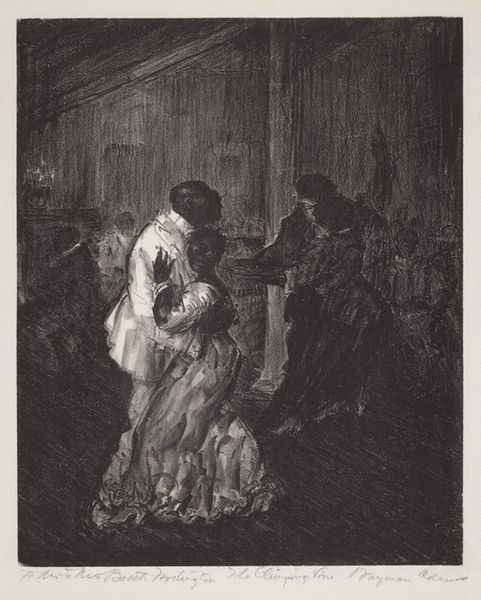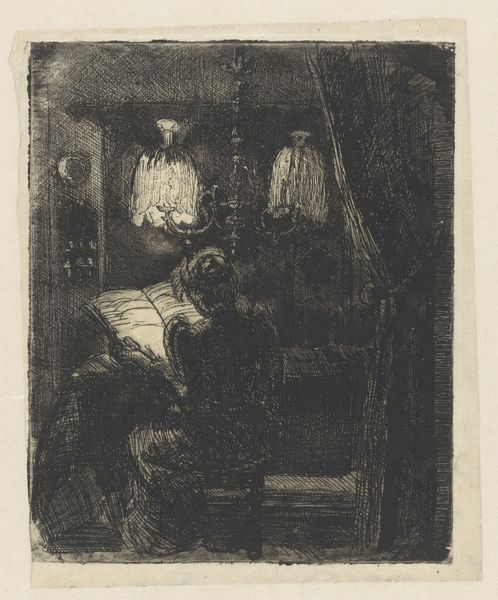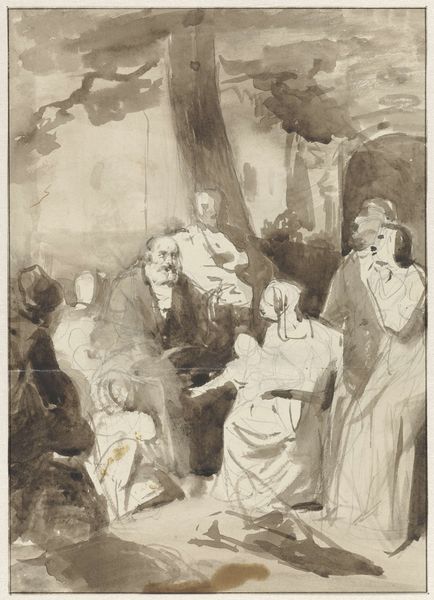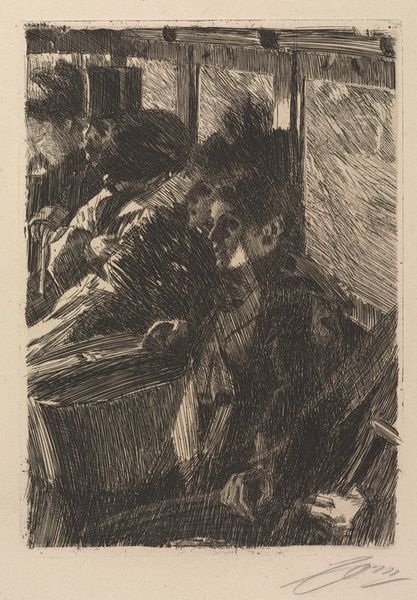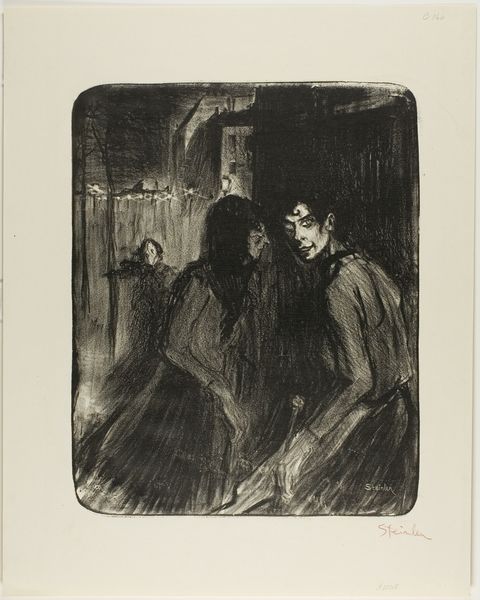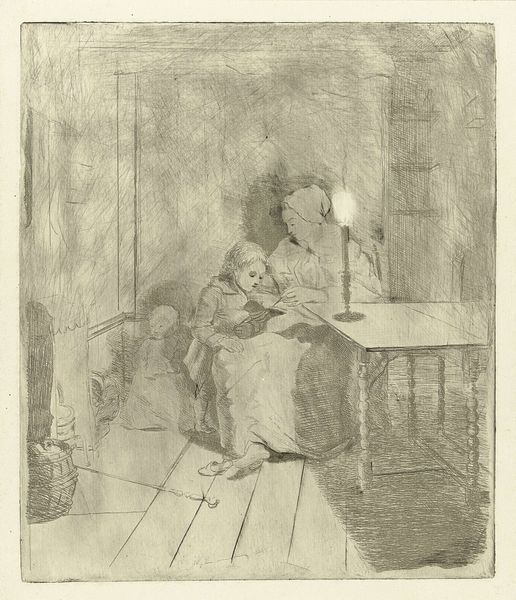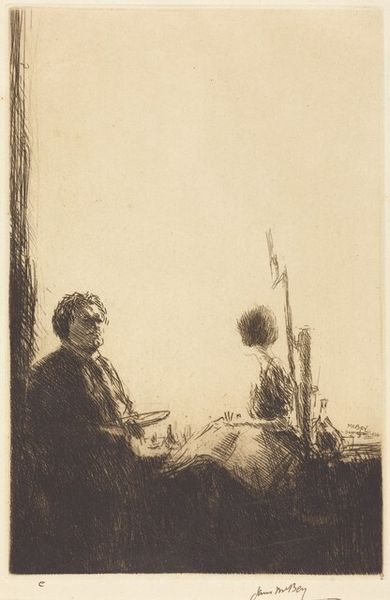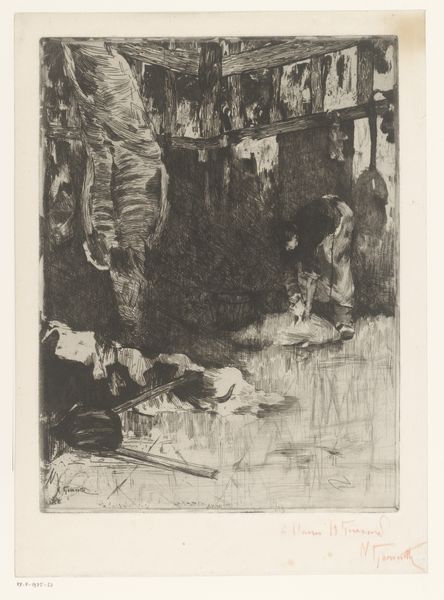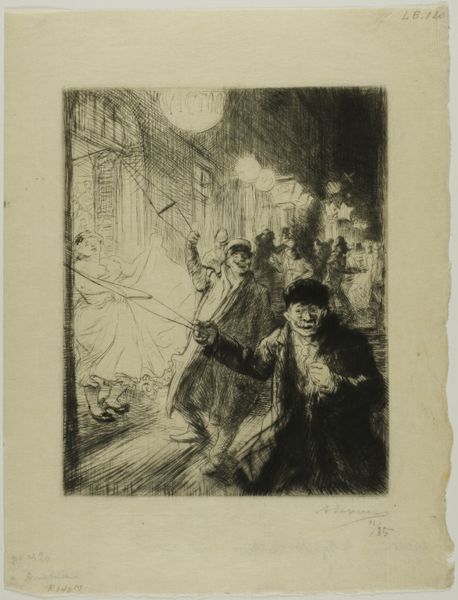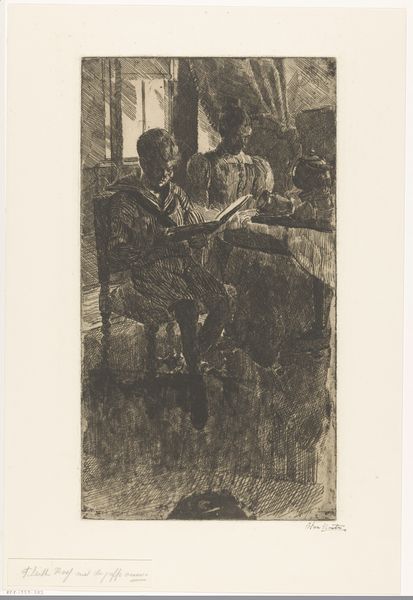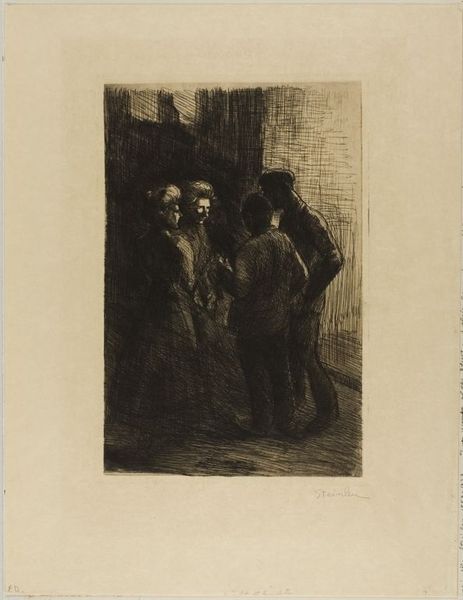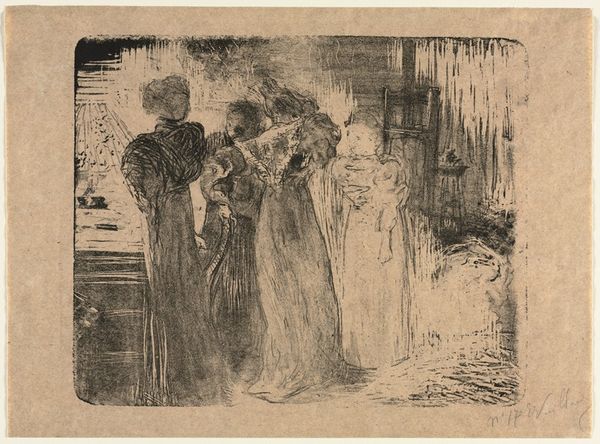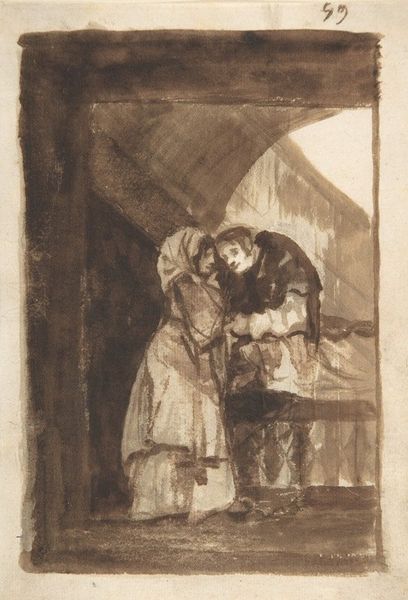
drawing, print, charcoal
#
portrait
#
drawing
# print
#
charcoal drawing
#
charcoal art
#
pencil drawing
#
genre-painting
#
charcoal
#
charcoal
Dimensions: image: 258 x 213 mm sheet: 383 x 285 mm
Copyright: National Gallery of Art: CC0 1.0
Curator: This charcoal drawing from 1930 is titled "The Offering" and was created by Wayman Adams. What's your immediate take on it? Editor: It strikes me as a somber, almost reverential scene. The dark, muted tones add a weightiness. There's a concentrated activity depicted, though quite subtly, which invites us to linger and inspect the nuances of the people pictured. Curator: It’s interesting to think about charcoal as a medium, here. Adams builds the image slowly by layering a mass of compressed material – essentially burnt wood. Note the social implications of such a process—charcoal as a readily available material, cheap and industrious, perfect for capturing everyday scenes in an era of economic anxiety. Editor: Absolutely. I’m particularly drawn to the figure in white; he seems to act as an almost Christ-like figure with the offering being collected. There is a distinct contrast in values that draws the eye directly to his figure amid the crowd. Could that garment hold a deeper significance beyond its simple function, and how would viewers at the time read those contrasts and his relation to the gathered crowd? Curator: It’s the texture, too. Look at how the charcoal is smudged and feathered, creating a tangible surface. That materiality resonates with the subject, embedding the scene in the reality of the era: racial disparities, manual labor and perhaps commentary on commerce as the central "offering." This is visible in Adams’s earlier, lighter portrait work, though here the stakes seem amplified. Editor: I find it particularly fascinating how he leaves parts of the drawing unfinished, almost like fragments of memory. What remains unseen becomes just as powerful as what's meticulously rendered. It allows for personal projection onto what is presented and makes one think about the artist’s and the subjects’ social roles during the time. Curator: The use of such a humble material elevated into art really highlights that complex interplay of labour, class and artistic expression during that time. Adams captures the cultural tensions of that era with stark immediacy. Editor: Yes, thinking about the implied narratives in this art makes one ponder the enduring symbolic power of art itself, to speak and emote beyond generations and cultural context. Curator: Agreed. The means and meanings seem to merge so eloquently in this image.
Comments
No comments
Be the first to comment and join the conversation on the ultimate creative platform.
